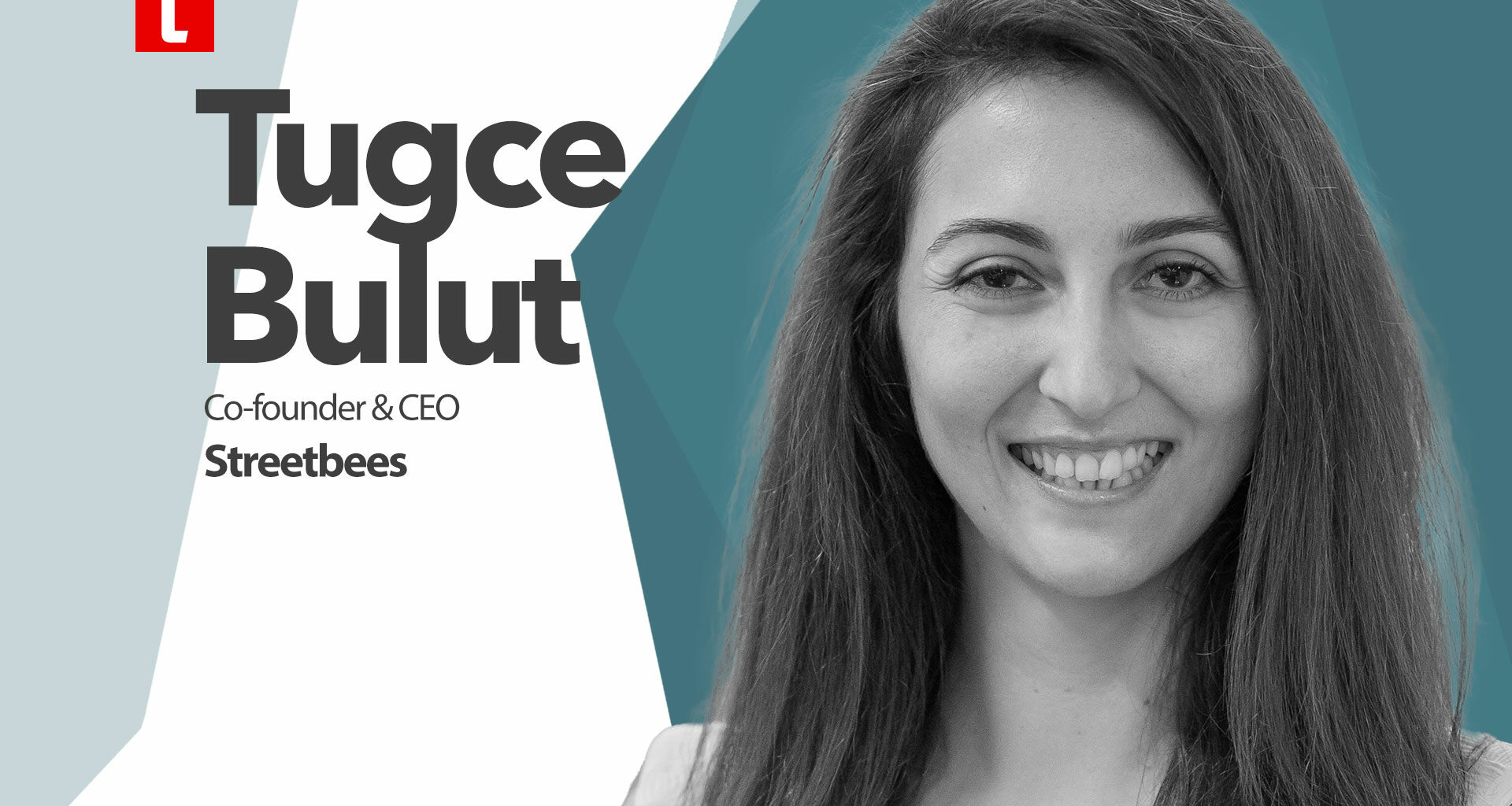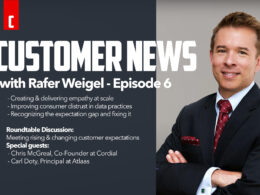We sat down with Streetbees co-founder and CEO, Tugce Bulut about Streetbees‘ unique approach to realtime consumer research, the journey from startup to multi-national powerhouse, and what it has been like to build the company as a female founder. All in all, it was a fascinating conversation.
Below is a full transcript of the conversation.
TheCustomer
Tell us a little bit about what Streetbees is and what Streetbees does.
Tugce Bulut
Very happy to. Streetbees actually came into existence as a, you know, in the junction of backgrounds that we have my co-founder has from coming from different areas right. Just to give a bit of a background – I was actually doing my PHD on poverty alleviation in a previous life so I did a lot of field research and you know, ethnographic research. Myself, I lived in India for a year, and you get quite close to people’s lives. You can observe what’s going on and that gave me a lot of insights into what good research looks like – when you can observe what’s happening in the moment in people’s lives right. And later on I worked as a strategy consultant for seven or eight years and we used to buy a lot of research from market research companies. And when we buy that, I started realizing that we always had to make a trade-off between either quality or quantity – which is very important for analytical um research you’re doing, right.
So, for example, if I’m working with a you know, one of the world’s largest chocolate companies as a consultant, and we want to project you know, which market they should focus on, which market segment they should go after, we get all our data in terms of like historical series for sales data for retail replacement. But when it comes to the most important factors – consumer demand – what they want how that demand is changing. We have this like one-off you know, usage and attitude type of research done at one scale five years ago. And we have to build all our models on that. And it was quite a stark difference that either you can observe people’s lives one by one, which is very expensive and not scalable, or you get all this quant data which loses the reality. So, with Streetbees we wanted to build something which doesn’t compromise on the quality of the information so we can actually, just like doing an ethnographic research, we can observe the real behavior. But thanks to AI technology we are using, we can do it at mega-scale. At the moment at Streetbees we gather more than 1.5 million moments of observations right, every month. So, you actually get the depth of the information together with the breadth you’re getting, so that you can actually use it for market sizing for opportunity sizing with statistically significant data.
TheCustomer
Can you describe if, without giving away your secret sauce, how you do that? Because I think having solved that, and clearly you have, there are an awful lot of market research companies out there that can give you quality or quantity and as you said you know quant or qual, but struggle to deliver both.
Tugce Bulut
Yeah, to be honest, no secrets. We always took the approach that we want the market to operate this way so, the more people can do this the better for the overall market. And I think from the leading brands, that’s a big demand anyway right. They don’t want to rely on old-school surveys anymore where people are showing massive metrics, you know. And options when you lose will to live by the time you finish the survey right. No one wants to collect data like that anymore right. Like what is the solution here? it’s gonna sound so simple when I say it but it’s also equally challenging to actually do it. We need to treat both sides of the market as our customers.
We consider Streetbees an exchange platform. It’s a Data Exchange platform. Brands and customers need the data. People on the street are happy to share this data but they both are your customers. So, you can’t turn to the (we call them Bees) our community, we can’t turn to the Bees and say that you need to spend 15 minutes to do this survey, exactly answering these questions in this way. Why should they do this, right? Like and then they are not going to actually provide real information.
We make the experience to the community super easy within the flow of their natural life flow. So, if I’m in a bar on a Friday evening, I can go to the Streetbees app. I can capture the moments in the app by simply taking a photo and recording for one minute, what Im doing, who I’m with, what’s my mood like, what brought me here, right. That’s it – it’s that easy. So, we can get this from millions and millions of people on an ongoing basis.
And then on the customer side, they need a solution that’s actionable. In between, we have the AI technology to turn that, what we call, unstructured data into actions and recommendations for customers. That’s the hard bit – you have to do this at scale. For most agencies who try to do this, they couldn’t reach those scales and AI doesn’t work without the scale. And for the more traditional, you know, providers in the market it’s quite challenging for them to build that AI technology.
TheCustomer
So, I mentioned at the start of this conversation, that you’ve been in the market for five or six years at this point. Five or six years ago AI was an infant technology that was barely being used. So, my hat’s off to you for figuring out that that’s the only way to do this but being able to implement things that you know, back in those early days when, you know. I mean, that’s when people were using square wheels on their cars and using brick phones. AI just wasn’t able to do what it is now because it’s been developed out so well. So that’s pretty amazing.
I wanted to, if I may, I want to talk a little bit about your journey from the infancy of the idea of Streetbees and what it’s taken for you to get here this far. And there’s all kinds of interesting little milestones along the way I’ve become familiar with. But I think of particular importance to a lot of our readers and viewers is the fact that you’re a female founder and I know in this country that presents its own challenges. I’m really not familiar with what those challenges might be where you are, but can you talk about what that’s been like for you to concept this idea, build it out, turn it into reality and then journey it through to where you are now?
Tugce Bulut
Yeah, it’s a fantastic question and frankly Mike, I can’t take the credits for it. Because there are so many people who actually really dreamt it with us. And maybe that’s one important thing for anyone who is getting started – to keep listening to the market. I had one idea. It was a very simple one. There is a buyer for the data, there is a seller for the data. Let’s use technology to make the market right so both sides are happy – that’s how we started. But even we didn’t know what was possible with technology at that stage, right.
And then some of the biggest brands in this space – and you’re talking about you know, Unilevers and Pepsicos and Ikeas, etc. who came in and told us that, look, what you’re describing and there was nothing yet, right. I really need to give the credit to those guys they just saw the vision and they supported it, right. They said that whatever you’re talking about, if it was possible, it’s exactly what we need and what we want. So, we are happy to work with you guys as pilots, etc., to see where you can get to. And we were always very transparent about what we have and what we don’t have yet so there was never a disappointment, right, in terms of the results, because we experimented a lot together with them. And then we started hiring a technology team (and) we are about 200 people now. And you know, more than i think, 20% or 30% of our guys have PhD degrees in physics and mathematics. And they also showed us what else is possible that people like myself who never imagined that actually you can do that with technology.
So, there’s both sides. I think Mike, you listen to your technology teams and when you listen to the customers problems and what are they trying to solve, they then keep coming up with the most you know, cost efficient, fastest solutions that can actually satisfy that demand.
TheCustomer
So, you started out with a handful of support from some brands that said, “If this is possible, we want to be a part of it,” which is a fairly unique way to approach a startup. A lot of startups start with a great idea then have to go scrounge around for money to build something and then prove out their concept. And you actually started from a demand standpoint, which is very interesting.
Without opening up something that may be uncomfortable – and I really don’t want to – with this question as a female founder, have you found have you seen or recognize, I should say any differences in the way you’ve had to approach building this company from say if it was a male-only team or male-lead team?
Tugce Bulut
Look it’s hard for me to compare. I guess I’ve never been a man so I didn’t have those experiences. But jokes aside, of course I know what we are referring to. I think we still have some privileges living in London, right. And we definitely – I can’t say that we were in a very disadvantaged position in any way somewhere like London or New York – you are close to capital. It’s much easier right, to raise money. My advice to everyone is usually that – just focus on the problem you’re solving heads down. And if someone is not being gender-neutral in the sense that in your conversations you feel that there is a gendered angle there, or you don’t feel like they see you as an entrepreneur, just move on. There are so many other people! Like, you have to pick your battles losing time fighting people on something you can’t change. But what you could do is you just keep choosing to work with people who, when they look at you, all they see is an entrepreneur. Your gender is irrelevant for them, right. And I think we’ve been very lucky finding those people to work with.
TheCustomer
You see a lot of market research. You have a good handle on its predictive value of it. As such for Streetbees – where do you see market research going say over the next two, three, five years? Where do you see Streetbees going in the next two, three, five years?
Tugce Bulut
Yeah, and I mean, Mike, I think the most interesting thing here is to really follow the structural changes, right. You probably know better than (me), you’ve been in this sector a lot longer. And what I see is that in the time I got started we’ve seen budgets being cut, right, in a lot of market research departments. In even the biggest brands headcounts have been going down. Why? Because the brands expect to create the same results, if not more, with less money, right. And that’s their mandate now. What that means is they expect from the solutions.
It’s like coming back to that infamous Ford car, right. You can’t keep adding more horses, you need a car now. You need a car engine, right. And I think that’s the biggest change the sector needed. Like when you look at more traditional players, they keep improving but it’s just adding more horses to the carriage whereas what we brought to the market is – forget about older structures right, we are not gonna do this in a way that’s gonna fundamentally change your cost base. And I see a lot of other companies starting to come to the space with that mentality. It’s not so much about “we can do this faster, cheaper but it still delivers the same result,” it’s more about you need an execution tool doing research for the sake of research. No one has money for that anymore, right. So whatever you do to understand the consumer needs to have justified quantifiable results on your top line, right. And if you can’t make that connection to the top line and the change that’s happening on the top line, it’s very hard to, you know, justify your existence.
TheCustomer
Very difficult. Yeah, all kinds of industry stats to prove that out. Well, Tugce, thank you so much. I could personally continue this conversation for another couple of hours but I won’t do that to your schedule. But I’ll simply say that for readers and viewers of TheCustomer, we try and focus our efforts on innovative approaches to customer engagement and customer insights and customer technologies, and I would just say, please pay attention to what Streetbees is doing. Tugce, it’s been a pleasure speaking with you. Thank you so much.
Tugce Bulut
Likewise Mike, thanks so much for having me.













